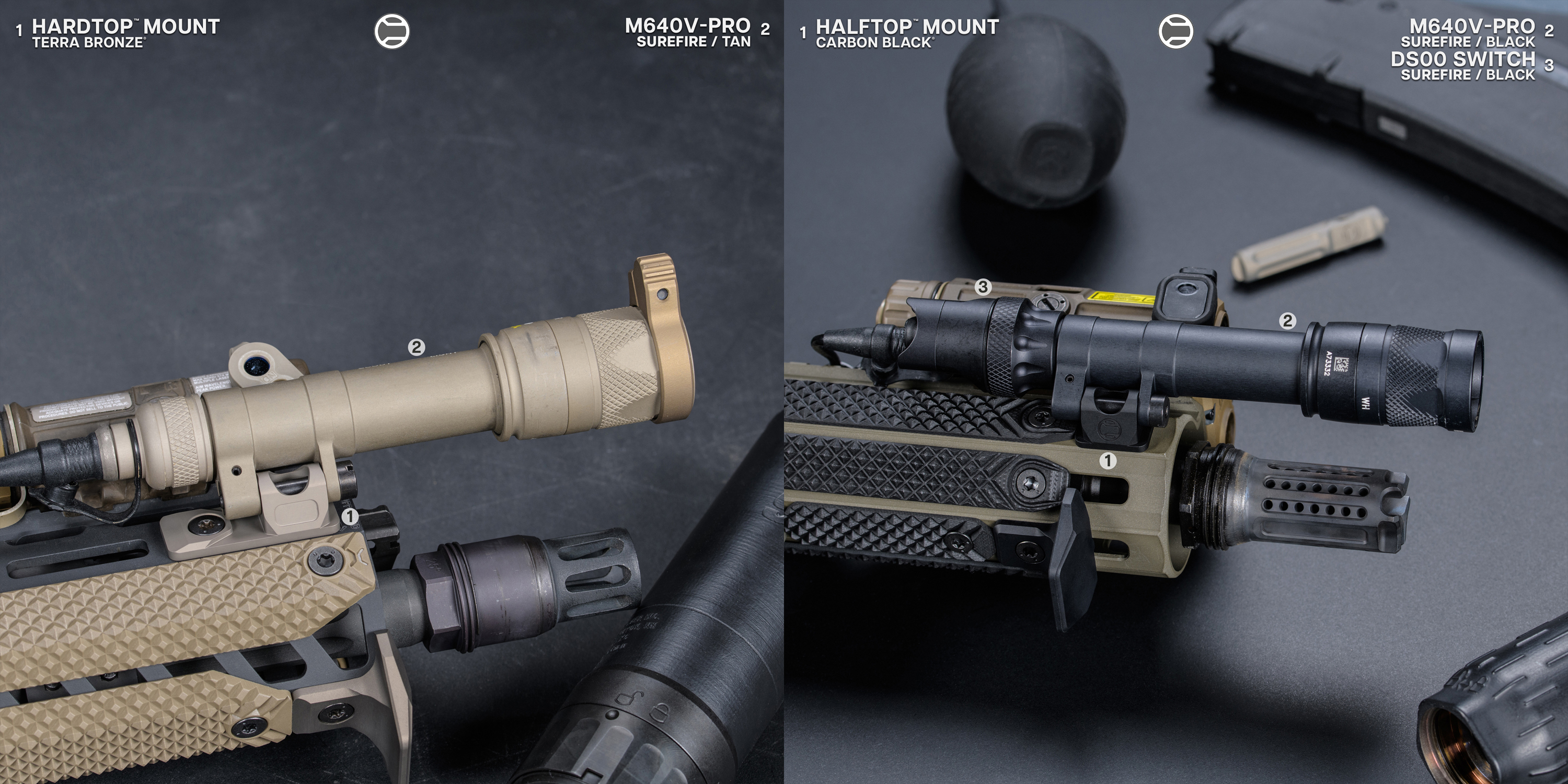
Lights and lasers are among the highest-impact accessories you can add to an AR-15. A well-chosen laser/light combo changes how and where you can operate the rifle — from home-defense scenarios to low-light competition stages and duty applications. But the performance tradeoffs (weight, balance, beam placement, activation method, runtime) and the sheer number of product options can make selecting the right combo confusing. This guide breaks down the types of lights and lasers, mounting solutions, practical considerations for beam patterns and lumens, and recommended RailScales-centric accessory pairings to build optimized, lightweight, and reliable setups.
Why a Laser/Light Combo Matters for AR-15s
A combined laser/light delivers two complementary capabilities:
• Immediate target identification and illumination (flashlight): identifies threats, exposes obstacles, and lets you identify whether an object is a threat at night or in shadowed areas.
• Rapid aiming and close-quarters alignment (laser): provides a near-instant point of aim without bringing your eye to the optic, useful for fast threat engagement or when using NVGs.
A good combo balances these functions without adding unnecessary bulk to the forend, leaving room for other AR accessories in 2025 and preserving handling and balance.

Types of Weapon Lights and Laser Modules
Weapon Light Types
• Scout-style / offset lights — mounted forward on the rail or at 12 o’clock offset; excellent for hands-forward holds and use with magnified optics.
• Inline/under-rail lights (lower 1/3) — for short rails or PDW builds; lower profile and often used with pressure switches.
• Compact weapon lights (Scout micro variants) — ideal for SBRs and small rails where space is at a premium.
Key performance factors: lumens (brightness), candela (throw), beam pattern (flood vs throw), and runtime.
Laser Types
• Visible red/green lasers — offer quick point-and-shoot aim for CQB; green is more visible in daylight but draws more power.
• IR lasers / IR illuminators — intended for use with night-vision devices (NVG/PNVS). IR lasers are invisible to the naked eye and should only be used with IR optics and in compliance with law/regulation.
• Combo units — many modern units combine visible/IR laser dots with a weapon light in a single chassis for compact function.
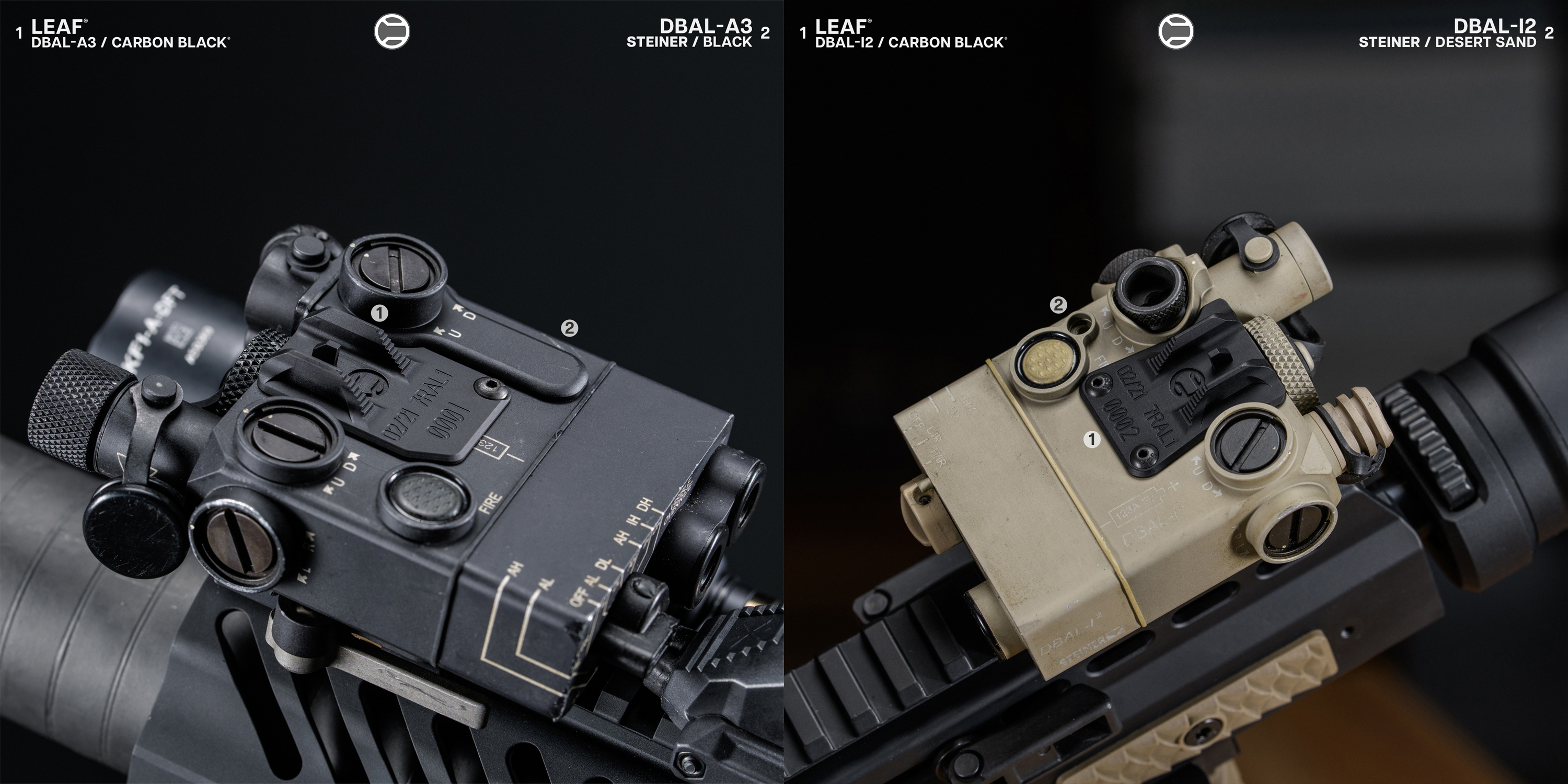
Mounting Solutions & Rail Compatibility
Choosing the right mounting method is just as important as the light/laser selection itself. Mount types determine footprint, snag profile, and how much rail real estate remains for other accessories.
• M-LOK QD/light mounts — low profile, lightweight; mounted directly into M-LOK slots for secure placement without wasting top-rail real estate.
• Offset mounts / cantilever mounts — useful to move a light slightly forward or to a side so the light clears an optic or makes pressure-switch routing easier.
• Integrated mounts on lightweight plates — combined mount + light interface reduces part count and friction points.
RailScales fits and recommendations: use low-profile mounts like the RailScales Halftop (½-slot footprint) or Hardtop(1-slot base) to keep the light’s footprint minimal while offering fine fore/aft adjustment — ideal for short rails or PDW configs. These mounts preserve rail real estate and help position lights so they’re usable with different holds.
Brightness, Beam Patterns and Runtime — Choosing What Matters
Different use-cases require different lighting characteristics:
• Home defense / entry — prioritize wide flood + mid-range throw and stable beam for room clearing. 300–1,000 lumens is a practical range for most enclosed spaces; choose a beam with good spill to illuminate corners.
• Duty / patrol — higher candela for distance, good battery runtime, and robust switching. IR capability can be essential for covert or NVG operations.
• Competition / transitions — quick startup, crisp hotspot (good for target ID), and minimized bloom so you can retain sight picture when transitioning between targets.
Battery type and runtime matter — choose cells and formats you can source easily (CR123A, 18650, etc.), and consider spare batteries in your kit.

Activation Methods & Switching Options
How you activate your light/laser affects real-world performance:
• Tailcap switches — simple, positive activation; best for scout-style lights.
• Pressure switches — allow activation while maintaining shooting grip; great for under-rail lights or low-profile setups.
• Remote/button/wireless activation — good for competition setups but adds complexity and potential failure points.
RailScales mounts are compatible with run-routing for pressure switches and help keep the switch cabling low-profile and snag-free.
Legal, Safety, and Training Considerations
• Eye safety: never point laser beams at people’s eyes; many high-power laser modules can cause retinal damage.
• Local laws & LE restrictions: check local and military laws on laser use; IR modules and certain visible laser powers may be restricted in some areas.
• Drills & maintenance: practice activation drills, ensure repeatable placement, and include battery checks in your regular maintenance.
Sample Builds & Recommended Combos
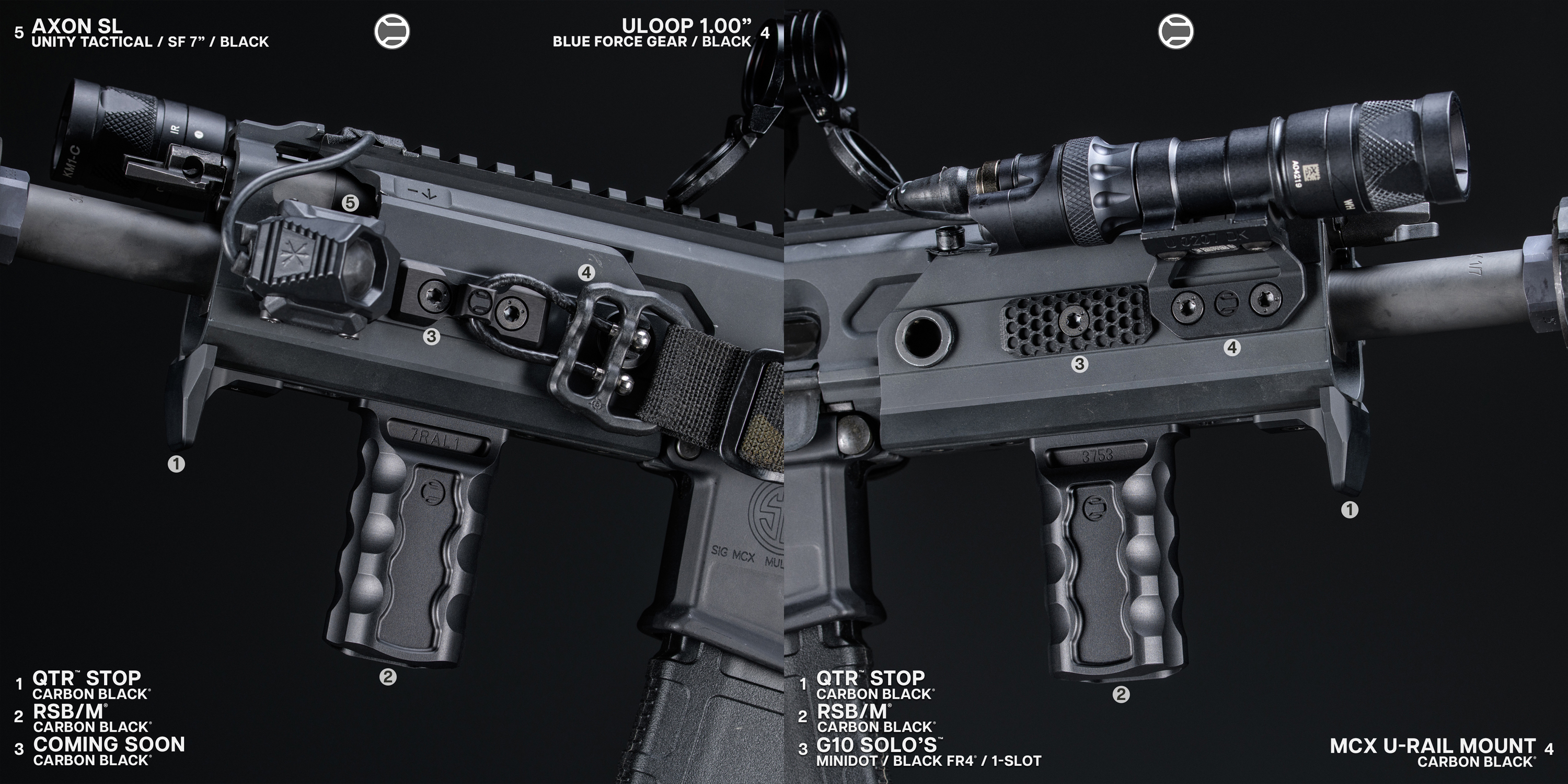
1. Home Defense / Doorway Work
• Compact, high-spill light (400–800 lm)
• Visible/IR laser with lower-power visible dot for close-in rapid aim
• Low-profile Halftop or Hardtop mount to keep the light tight to the rail

2. Duty / Patrol
• High-candela spotlighting unit with IR capability
• Pressure-switch activation routed along the left side for immediate access
• QDX sling mount integrated near rear of handguard for sling management

3. EDC / Rapid Response
• Lightweight scout light with quick offset mounting
• Small visible laser for fast indexing
• Minimal footprint using Halftop to preserve space for hand stops or a small vertical grip like the RSB
Installation & Zeroing Basics for Lasers and Lights
• Mount securely: torque mounts per manufacturer specs; check after first range session.
• Zero laser to your point-of-aim: establish zero at an operationally practical distance (3–10 yds for CQB lasers; 25+ yds for duty aiming).
• Confirm co-witnessing: if pairing with an optic, use risers (for example the RailScales MonoLift Riser) to align optical centers for comfortable heads-up shooting and better co-witness with magnifiers or red-dots.
• Check activation ergonomics: ensure pressure switch placement doesn’t cause accidental activation and that it’s reachable for consistent hand placement.
Training and Maintenance
• Routine battery checks and spare batteries in your kit.
• Monthly function tests: beam, laser alignment, button/switch reliability.
• Clean lens covers and check O-rings and seals for waterproof lights.
• Practice transitions, toggling IR/visible modes, and zeroing drills at multiple ranges.
RailScales Product Recommendations (Integration & Compatibility)
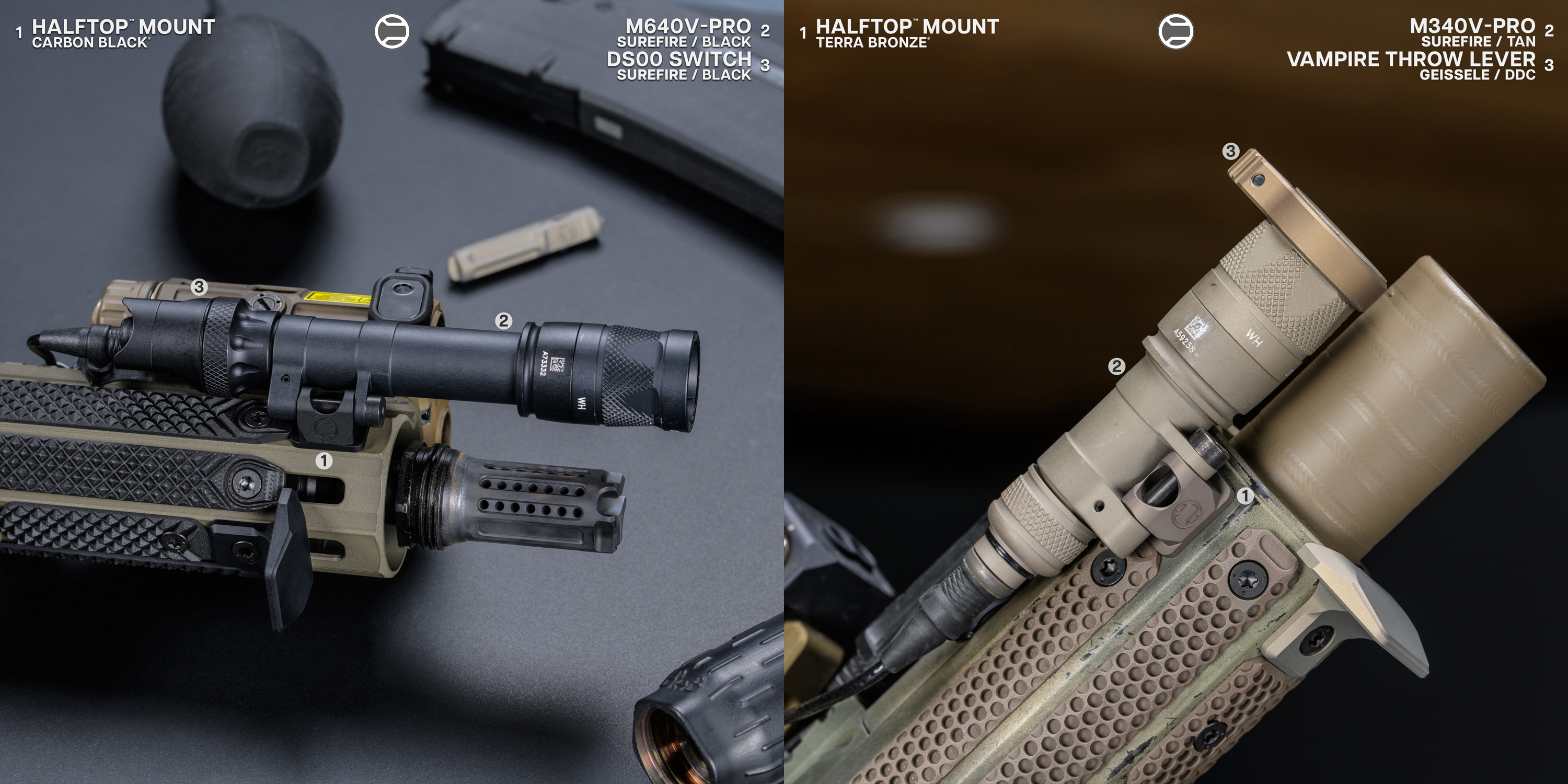
• Halftop™ Light Mount — ultra-low ½-slot footprint for compact M-LOK rails; ideal for PDW and short rails where space is limited.
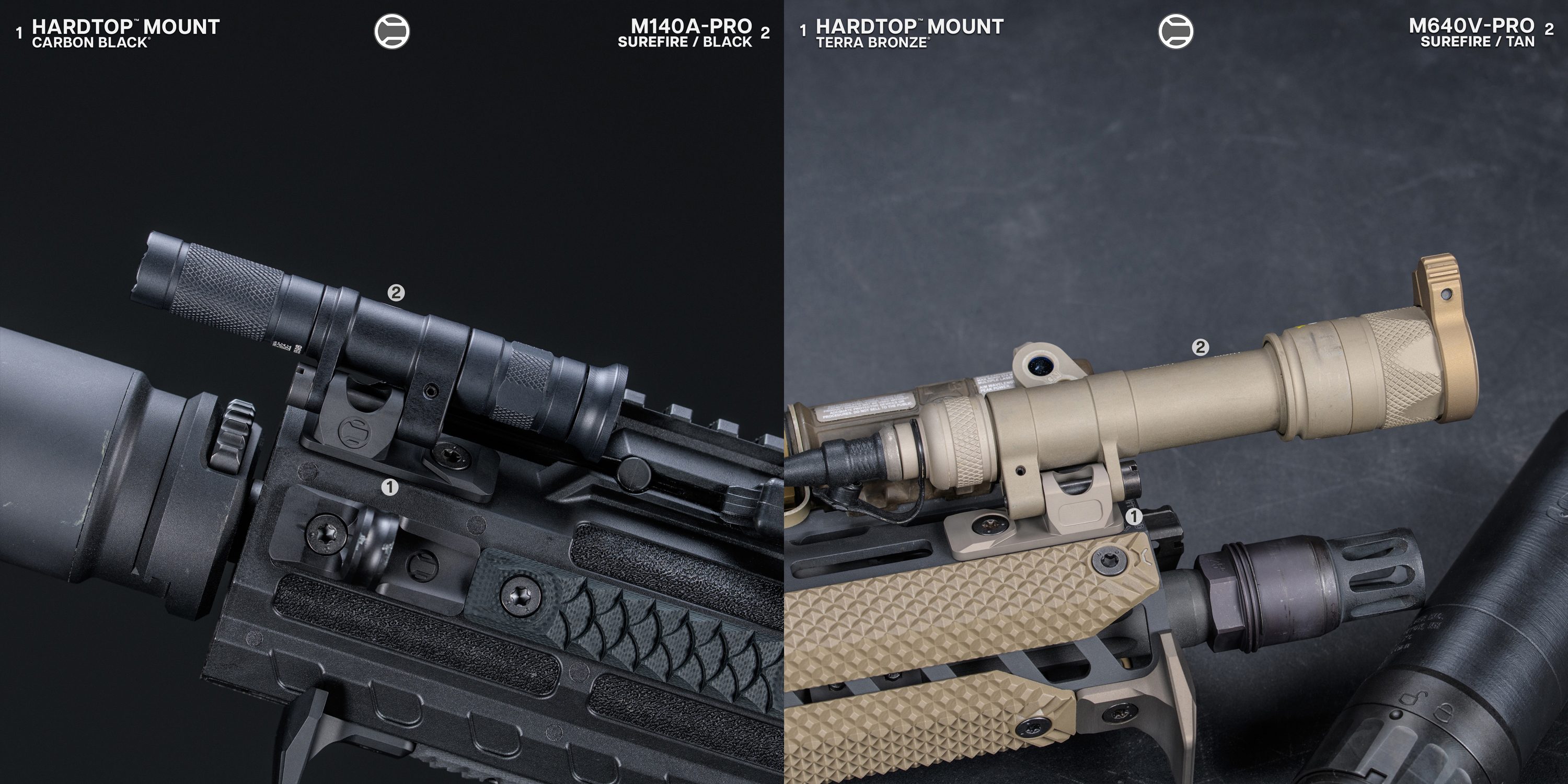
• Hardtop™ Light Mount — 1-slot base with fore/aft adjustment for optimal beam placement and zeroing.

• Anchor / RSB / RSB-M Vertical Grips — keep balance and control while preserving light placement options.
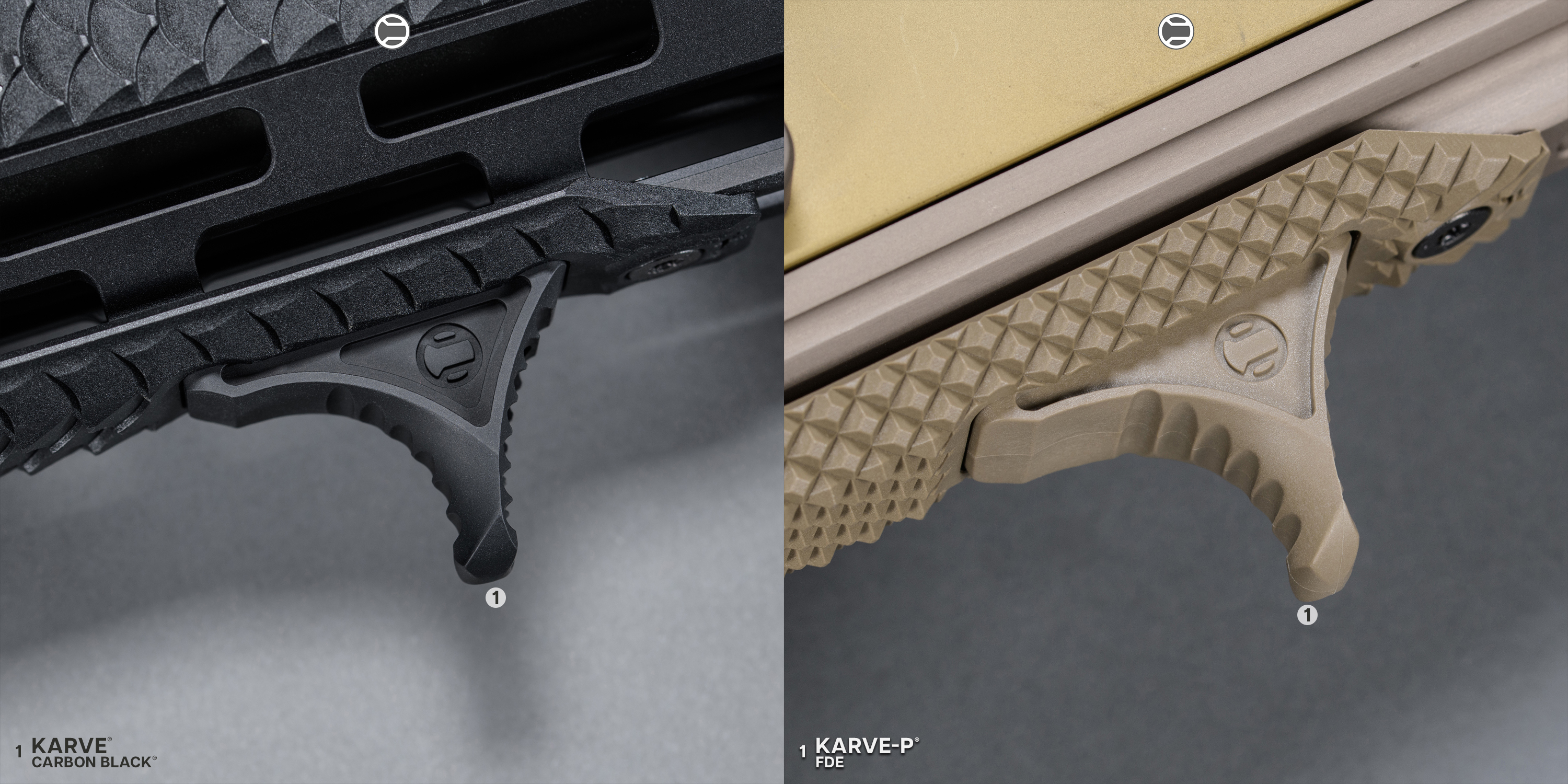
• Karve® Handstop — lightweight indexing for hands-forward grips that pair well with scout style lights.
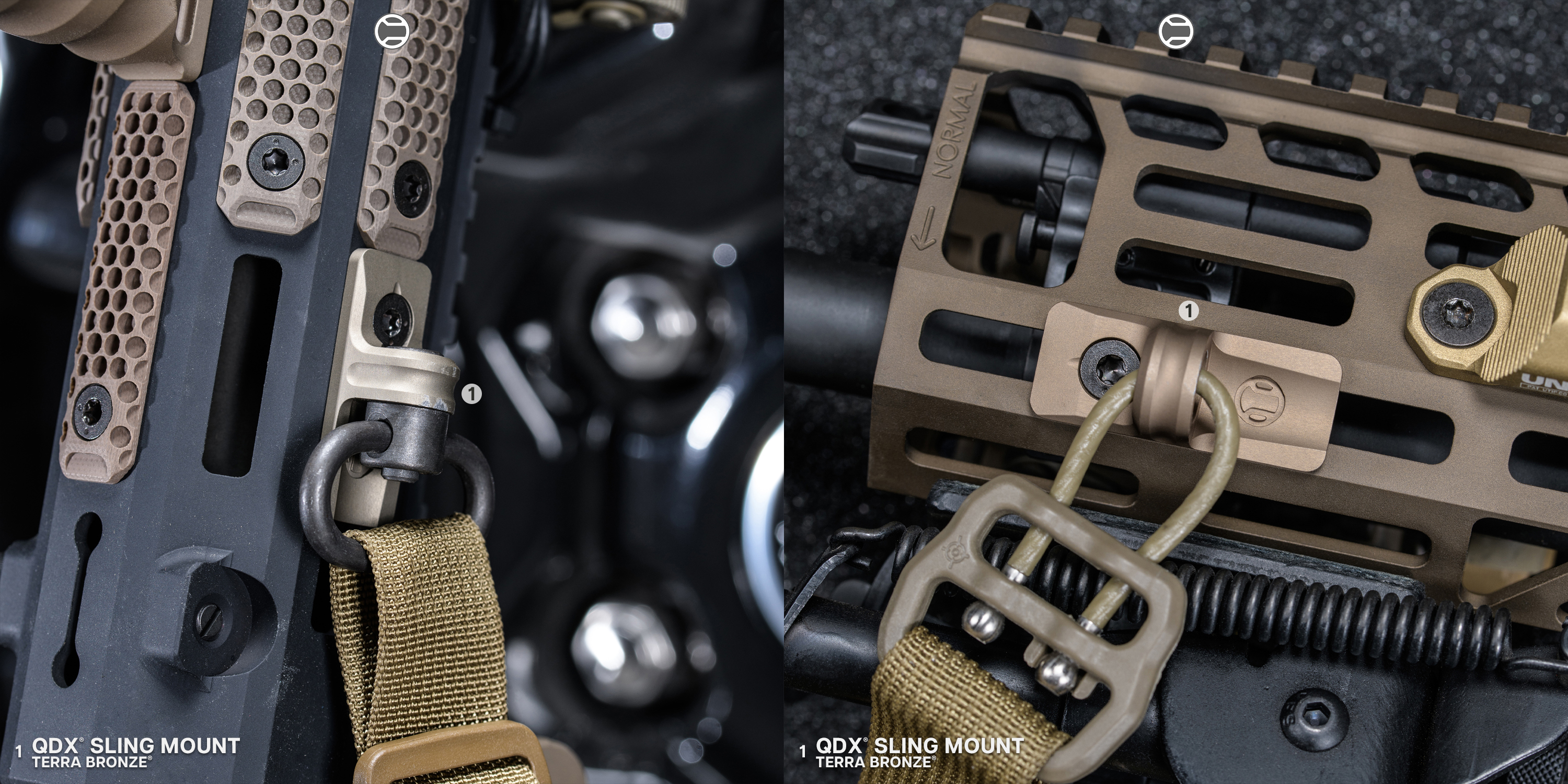
• QDX® Sling Mount — keeps slings tidy and prevents interference with laser/light cabling and activation.
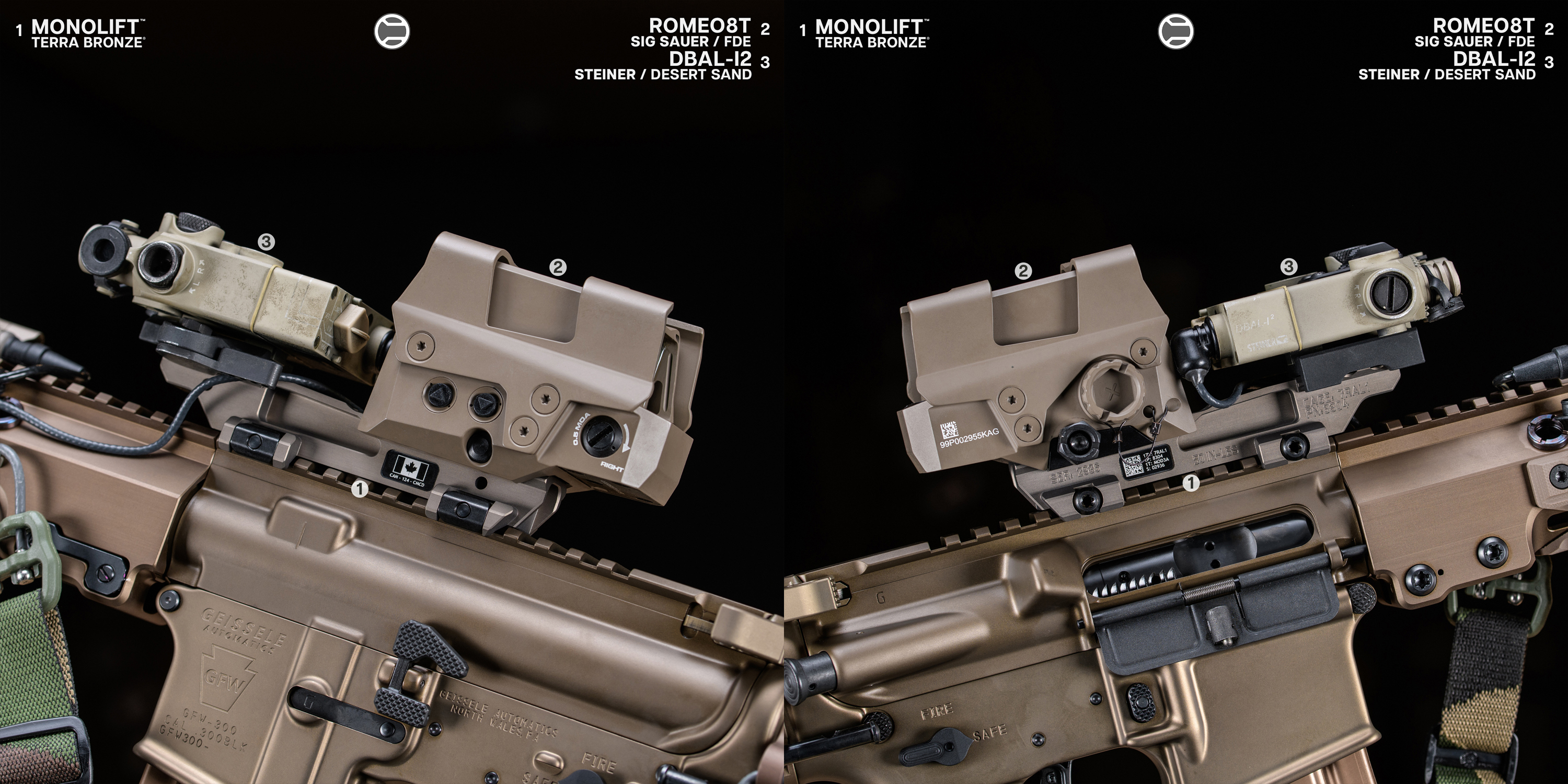
• MonoLift Riser — use when combining magnifiers or taller optics with lights/lasers to achieve comfortable optical centers and consistent co-witness.
FAQ — Laser/Light Combos for AR-15s
Q: Should I choose a combined light/laser or separate light and laser units?
A: It depends on mission and space. Combined units save rail real estate and are simpler to deploy, but separate units allow you to pick the best light and best laser independently — useful if you want high-power illumination and a separate IR laser for NVG work.
Q: Red or green laser — which is better?
A: Green is generally more visible in daylight; red is simpler and uses less power. For low-light environments both work, but green offers better visibility in varied lighting conditions. Consider battery life and your expected engagement distances.
Q: Can I use IR lasers with standard optics?
A: No. IR lasers are intended for NVG users and won’t be visible to the naked eye. They should only be used with compatible IR optics or NVG devices.
Q: How bright is “too bright” for a close-quarters light?
A: For CQB, excessive lumens with extreme throw can create too much bloom and ruin your sight picture. A balanced combo with 300–1,000 lumens and a stable hotspot/flood profile is often ideal. Match the light to your intended use and practice transitions.
Q: How do I avoid snag points when adding a light?
A: Use low-profile mounts (e.g., Halftop/HardTop), tuck switch runs along the handguard, and use compact mounts that reduce height off the rail. RailScales designs mounts to minimize snagging while allowing pressure switch routing.
Q: Will the light/laser combo interfere with other accessories?
A: Proper placement and smart mount selection prevent interference. Use offset mounts for scope clearance and compact mounts to preserve M-LOK slots for additional AR15 accessories.
Final Recommendations On Laser Light Combo For Your AR
• Start by defining how you’ll use the rifle (home, duty patrol, competition). That will inform whether you need throw, spill, IR, or long runtime.
• Minimize footprint and snag points with low-profile mounts like RailScales’ Halftop and Hardtop.
• For optic/laser co-witness and comfortable heads-up posture, consider the RailScales MonoLift Riser.
• Integrate thoughtful switch routing and practice with your activation method so your muscle memory is consistent under stress.
A great laser/light combo can transform your AR-15 from a daylight toy into a truly versatile tool for low-light operations. With the right mounts and attention to ergonomics, you get a compact, reliable setup that’s balanced, fast, and ready for real work.

Disclaimer:
This blog content was generated by a human and with the aid of artificial intelligence. It may contain errors or inaccuracies and should not be relied upon as a substitute for professional advice. This content is for SEO/entertainment purposes only and the views expressed in this content does not necessarily reflect the views of RailScales LLC. For more information, please refer to bullet point #13 on our FAQ.

